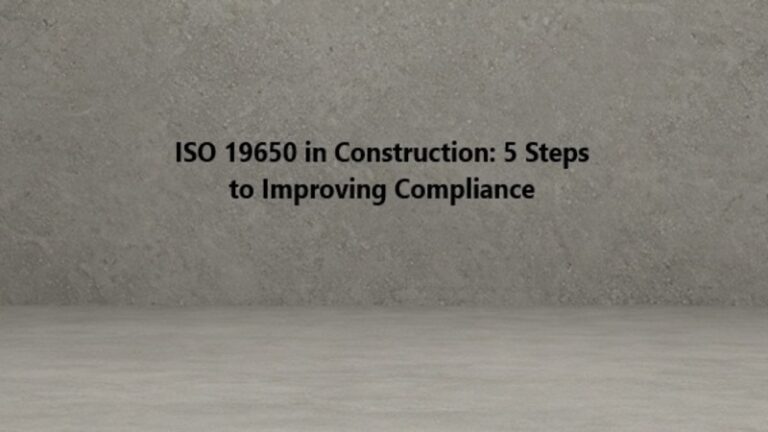In the highly competitive and complex world of the construction industry, effective bid management is the foundation upon which successful projects are built. The ability to submit accurate, competitive, and timely bids can make the difference between securing lucrative contracts and facing financial losses. Two primary approaches exist for managing construction bids: Construction Bid Management Software and Manual Bidding. This article embarks on a detailed analysis of these methods, focusing on their respective advantages and disadvantages within the context of the construction industry.
Defining Construction Bid Management Software
Construction Bid Management Software is a comprehensive suite of digital tools and solutions designed to streamline the entire bidding process for construction projects. These software platforms offer a centralized hub where contractors, subcontractors, and project stakeholders can collaborate, communicate, and manage the bid lifecycle. The primary objective of Construction Bid Management Software is to enhance efficiency, accuracy, and transparency in the bidding process.
Benefits of Using Construction Bid Management Software
Streamlined Project Communication: Construction Bid Management Software facilitates seamless communication between all parties involved in the bidding process. Contractors can send and receive bid invitations, share project documents, and exchange messages, thereby reducing miscommunications and delays.
Enhanced Bid Organization and Tracking: These platforms allow for the systematic organization of bids, ensuring that no crucial detail is overlooked. Contractors can easily track the status of bids, monitor bid responses, and manage subcontractor submissions, leading to greater bid accuracy and completeness.
Improved Accuracy in Cost Estimation: Construction Bid Management Software often integrates with construction estimating software, enabling contractors to produce more accurate cost estimates. This integration minimizes the risk of underbidding or overbidding on construction projects, which can have significant financial implications.
Case Studies: Successful Projects with Construction Bid Management Software
Let’s delve into two real-world examples where the use of Construction Bid Management Software played a pivotal role in achieving successful outcomes:
Case Study 1: Large-Scale Commercial Development
A construction company specializing in commercial development opted for Construction Bid Management Software to streamline its bidding process. By leveraging the software’s features for bid organization and communication, the company improved bid response times by 25%. This efficiency led to an increase in the number of successful bids and a significant expansion of their project portfolio.
Case Study 2: Infrastructure Project
An infrastructure project involving road construction required meticulous bid management to ensure timely completion. Construction Bid Management Software enabled the project manager to coordinate with multiple subcontractors efficiently. This resulted in a 15% reduction in project delays and a notable decrease in change orders, ultimately saving the project millions in potential cost overruns.
Manual Bidding in Construction
Explanation of Manual Bidding in Construction
Manual Bidding, often referred to as traditional bidding, involves construction professionals manually preparing and submitting bids for projects. While it may seem less technologically advanced compared to Construction Bid Management Software, Manual Bidding offers its own set of advantages and remains a common approach, especially in smaller construction firms and certain project scenarios.
A Comparative Cost Analysis
A thorough cost-benefit analysis is crucial when deciding between Construction Bid Management Software and Manual Bidding. It’s essential to weigh the upfront costs, ongoing expenses, and potential cost savings associated with each method. Factors such as the size of the construction company, the scale of projects, and the complexity of bids should all be considered.
Construction estimating software plays a pivotal role in cost management for both methods. Integrating construction estimating software with Construction Bid Management Software can enhance cost accuracy and provide a more comprehensive view of project expenses. On the other hand, manual estimations may lead to higher instances of underestimation or overestimation, affecting project profitability.
Performance Comparison in Construction Bidding
Evaluating Performance with Construction Bid Management Software
Construction Bid Management Software excels in terms of efficiency and accuracy. The centralized platform reduces communication bottlenecks, streamlines document management, and enhances collaboration among project stakeholders. This often results in shorter bid response times, fewer errors, and improved project communication.
Construction companies using Construction Bid Management Software commonly report benefits such as reduced bid preparation time, increased bid win rates, and a more streamlined bidding process. Improved bid accuracy also leads to fewer change orders and disputes during project execution, ultimately saving both time and money.
Assessing Performance with Manual Bidding
Manual Bidding can be effective in certain scenarios, particularly for smaller-scale projects or construction firms with well-established relationships and streamlined bidding processes. It allows for a high degree of customization and adaptability, which can be advantageous when dealing with unique project requirements.
However, Manual Bidding tends to be more time-consuming and may lead to bid inaccuracies, especially in larger and more complex projects. The risk of human error in calculations and document management is higher, potentially resulting in costly disputes, change orders, and delays.
Key Performance Indicators
In evaluating performance, construction professionals should consider key performance indicators (KPIs) such as:
Return on Investment (ROI): Compare the ROI achieved with each bidding method by measuring bid win rates, project profitability, and cost savings.
Project Completion Times: Assess the impact of each method on project timelines, including bid response times and overall project schedules.
Cost Overruns: Analyze the incidence of cost overruns, change orders, and disputes associated with each bidding method.
Bid Accuracy: Measure the accuracy of bids and their alignment with project outcomes.
Identifying Scenarios of Excellence
Different construction projects have varying requirements, and as such, the choice between Construction Bid Management Software and Manual Bidding should be project-specific. Construction Bid Management Software typically shines in larger, more complex projects with numerous subcontractors and stakeholders. It excels in promoting transparency, reducing errors, and enhancing bid accuracy.
Manual Bidding, while cost-effective for smaller-scale projects, may not provide the same level of efficiency and accuracy as automated solutions. Nevertheless, it remains a viable option for firms with well-honed manual bidding processes and for projects where adaptability and customization are paramount.
Challenges and Limitations in Construction Bidding
Challenges Specific to Construction Bid Management Software
While Construction Bid Management Software offers significant advantages, it is not without its challenges. Common issues include:
Initial Learning Curve: Implementing new software may require training for users and project stakeholders, potentially leading to a temporary decrease in efficiency.
Integration with Existing Systems: Ensuring seamless integration with other project management and accounting systems can be challenging.
Software Costs: The upfront and ongoing costs associated with Construction Bid Management Software may be prohibitive for smaller firms or projects with limited budgets.
Data Security: Safeguarding sensitive project information within the software platform is crucial.
Challenges and Constraints with Manual Bidding
Manual Bidding poses its own set of challenges and constraints:
Risk of Errors: Human errors in bid calculations, document management, and communication can lead to costly mistakes.
Limited Scalability: Manual processes become increasingly impractical as project scale and complexity grow.
Time-Consuming: Manual Bidding requires significant time and effort, which can hinder the ability to pursue multiple projects simultaneously.
Communication Bottlenecks: Manual communication methods may result in delays and miscommunications.
Addressing Risks and Pitfalls
To mitigate the challenges and risks associated with both Construction Bid Management Software and Manual Bidding, construction professionals should consider a few best practices. These include investing in comprehensive training for software users, conducting thorough cost-benefit analyses, and continuously evaluating the suitability of the chosen bidding method for each project.
Factors Influencing the Choice in Construction Bidding
Project Scale and Complexity: Large, complex projects with multiple subcontractors and stakeholders often benefit from Construction Bid Management Software’s efficiency and organization. Smaller, less complex projects may find Manual Bidding more cost-effective.
Budget Constraints: The available budget plays a significant role in the choice between software solutions and manual methods. Construction firms with limited budgets may prefer Manual Bidding to avoid the upfront costs of software implementation.
In-House Expertise and Technology Readiness: The level of technological expertise within the construction company can influence the choice. Firms with tech-savvy teams may be more inclined to adopt Construction Software.
Project-Specific Requirements: Unique project requirements, such as tight deadlines, strict compliance standards, or specific client preferences, may influence the choice of bidding method.
Providing Guidance for Informed Choices
The choice between Construction Bid Management Software and Manual Bidding in the construction industry is not one-size-fits-all. Each method offers its own set of advantages and drawbacks, and the decision should be tailored to the specific needs of each project. By conducting thorough cost-benefit analyses, evaluating project-specific requirements, and considering budget constraints, construction professionals can make informed choices that optimize their bidding processes and contribute to successful project outcomes.
Additional Resources
To further explore the intricacies of construction bidding and project management, consider the following resources:
[ConWize Construction Estimating and Bidding Software]
















